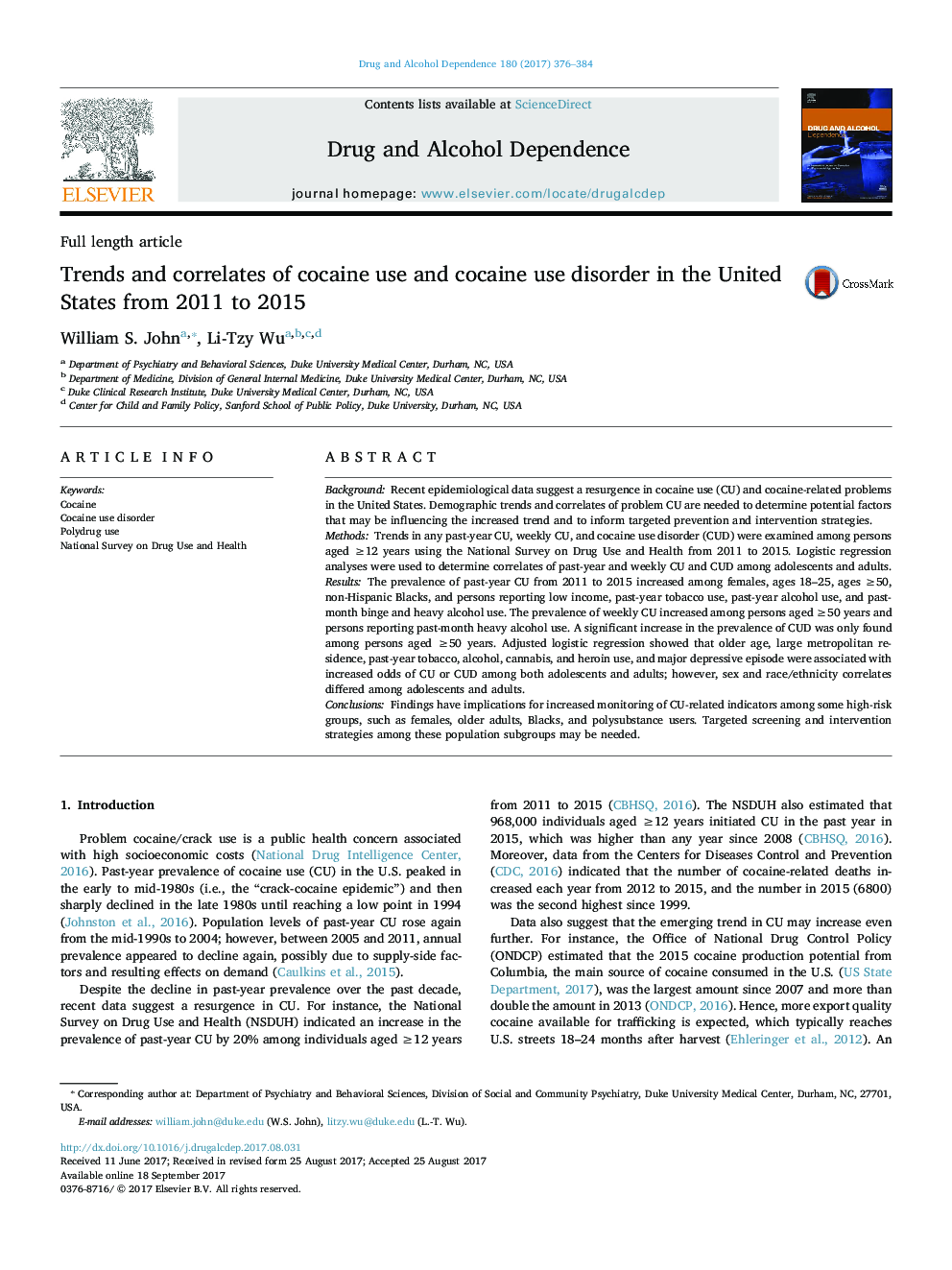| کد مقاله | کد نشریه | سال انتشار | مقاله انگلیسی | نسخه تمام متن |
|---|---|---|---|---|
| 5119878 | 1486111 | 2017 | 9 صفحه PDF | دانلود رایگان |
- Cocaine use and cocaine-related problems in the U.S. have increased from 2011 to 2015.
- Recent demographic trends in problem cocaine use have not been examined.
- Weekly cocaine use is increasing among older adults and heavy alcohol users.
- Prevalence of cocaine use disorder is increasing among older adults.
- Sex and racial correlates of cocaine use differed among adolescents and adults.
BackgroundRecent epidemiological data suggest a resurgence in cocaine use (CU) and cocaine-related problems in the United States. Demographic trends and correlates of problem CU are needed to determine potential factors that may be influencing the increased trend and to inform targeted prevention and intervention strategies.MethodsTrends in any past-year CU, weekly CU, and cocaine use disorder (CUD) were examined among persons aged â¥12 years using the National Survey on Drug Use and Health from 2011 to 2015. Logistic regression analyses were used to determine correlates of past-year and weekly CU and CUD among adolescents and adults.ResultsThe prevalence of past-year CU from 2011 to 2015 increased among females, ages 18-25, ages â¥50, non-Hispanic Blacks, and persons reporting low income, past-year tobacco use, past-year alcohol use, and past-month binge and heavy alcohol use. The prevalence of weekly CU increased among persons aged â¥50 years and persons reporting past-month heavy alcohol use. A significant increase in the prevalence of CUD was only found among persons aged â¥50 years. Adjusted logistic regression showed that older age, large metropolitan residence, past-year tobacco, alcohol, cannabis, and heroin use, and major depressive episode were associated with increased odds of CU or CUD among both adolescents and adults; however, sex and race/ethnicity correlates differed among adolescents and adults.ConclusionsFindings have implications for increased monitoring of CU-related indicators among some high-risk groups, such as females, older adults, Blacks, and polysubstance users. Targeted screening and intervention strategies among these population subgroups may be needed.
Journal: Drug and Alcohol Dependence - Volume 180, 1 November 2017, Pages 376-384
